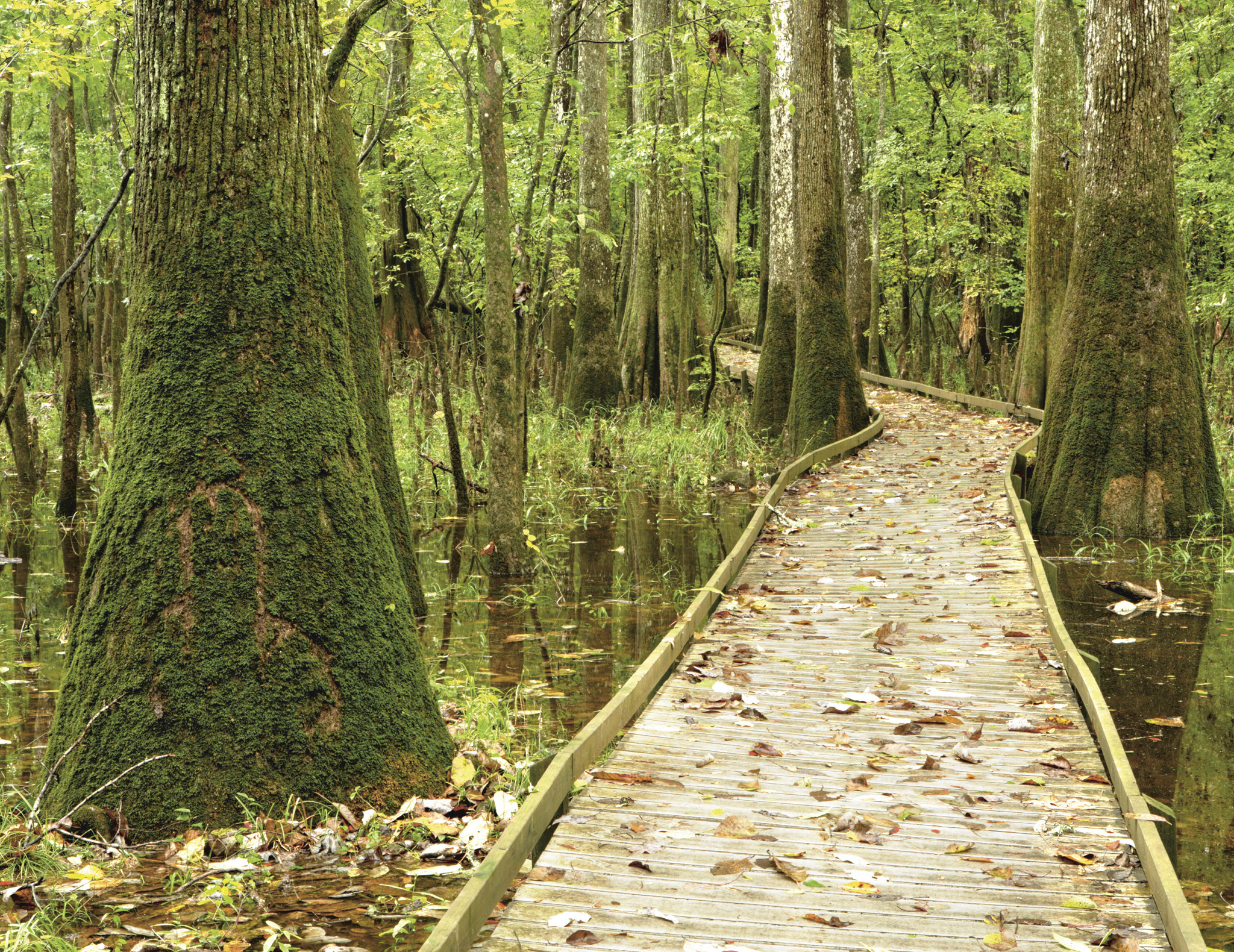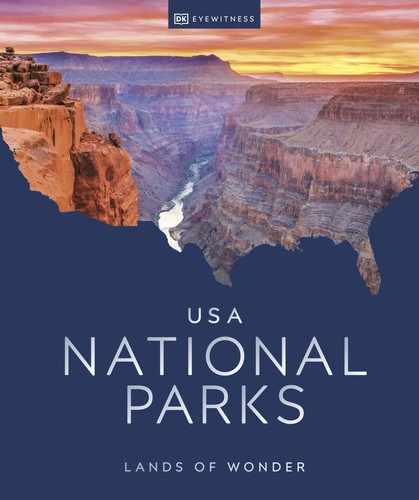
South Carolina
CONGAREE
ESTABLISHED 2003
At Congaree, when you stop and listen, it seems as if you can hear every breath of wind, every branch twist and fall, and every tiny bird whistle and chirp. The park is a sensory delight, filled with glorious trails through ancient floodplain and forest.
A singing natural world unfolds at Congaree, nestled among a forest of bald cypress trees where battles were lost and won. Congaree American Indians, whom the park was named for, lived on the Congaree River until European settlers arrived in the 18th century. In the next century, the lumber industry would come calling but, thanks to the park’s remote location and lack of usable waterways, most of the trees were spared
Today, under old-growth canopies, shy wildlife hides in the trees while amphibians, reptiles, and fish make their way through the floodplain, formed when the Congaree and Wateree rivers are swelled by heavy rains. Insects fill the air during hot summer months, Spanish moss drips from the cypress trees, glistening in the humidity, and scores of bird species’ fly through this International Biosphere Reserve. In the morning, reflections of the trees are precise in the stillness of the water. At night, head out on “owl prowls” to listen for echoing calls of barred owls.
A landscape to roam
Cast-fishers can drop a line anywhere in the park (except for Westin Lake), and serene spots include Cedar Creek and oxbow lakes where bowfins, bluegill, and yellow perch are pulled up regularly. For a leisurely adventure, paddle out on a ranger-guided outing to explore 15 miles (24 km) of waterway on the Cedar Creek.
If you’d rather stay on dry land, the wheelchair-accessible Boardwalk Loop Trail passes myriad tree species, from loblolly pines to tupelo trees, which shelter some of the microorganisms that make up this ecologically fascinating environment.
FOCUS ON
Microorganisms
In a floodplain, dynamic life-forms can wash right by without you seeing them with the naked eye. Such is true at Congaree, where waterways cover the forests with nutrient-rich sediments that enable fungi growth and feed insects, amphibians, reptiles, mammals, and birdlife while breathing health into the roots of the cypress forests.

Leaves carpet the pretty boardwalk trail, which gets swamped after the floods hit the park
